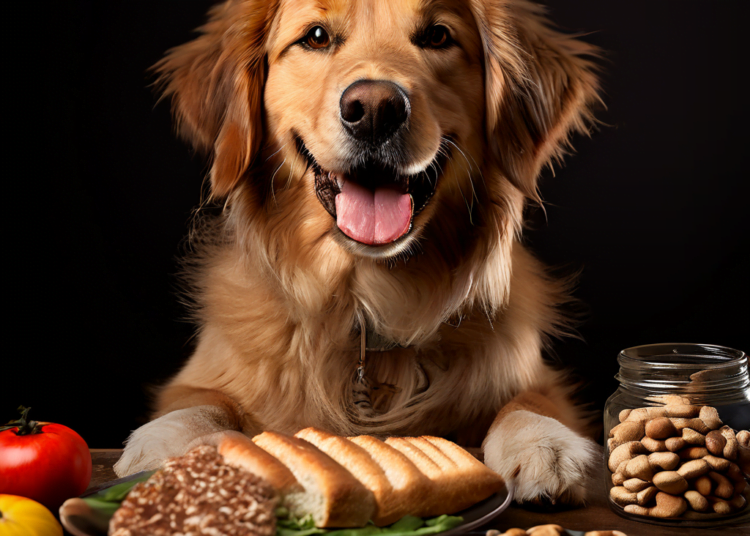When it comes to transitioning your dog to a new food, it’s important to do so gradually and safely. Abruptly changing their diet can lead to digestive upset and discomfort for your furry friend. To ensure a smooth switch without any adverse effects, follow these dog food transition tips.
Introducing a new food to your dog requires patience and observation. It’s best to mix the new and old food gradually, allowing your dog’s digestive system to adjust. This helps them become familiar with the new taste and texture without any sudden changes.
The gradual transition approach is highly recommended for switching your dog’s food brand. Start by mixing a small amount of the new food with their current food, gradually increasing the proportion of the new food over time. This slow adjustment allows their digestive system to adapt without causing any discomfort.
To avoid digestive upset during the transition process, closely monitor your dog’s stool. Any changes in consistency or frequency may indicate that the switch is happening too quickly. Additionally, introducing probiotics can help support your dog’s digestive health during this period.
Older dogs may have more sensitive digestive systems, making it crucial to take extra care when transitioning their diet. Consult with your veterinarian to ensure a suitable and gradual transition plan that considers their specific needs.
In conclusion, transitioning your dog to a new food can be done smoothly and safely. By following these dog food transition tips and observing their reaction, you can make the switch a positive experience for your beloved pet.
Key Takeaways:
- Gradually introduce the new food to your dog to avoid digestive upset.
- Monitor your dog’s stool during the transition process.
- Consider using probiotics to support your dog’s digestive health.
- Older dogs may require extra care and a specialized transition plan.
- Consult with your veterinarian for guidance and advice.
Introducing New Food to Your Dog
When it comes to introducing new food to your dog, it’s important to follow a gradual approach. Abruptly switching your dog’s food can lead to digestive issues and discomfort. To ensure a smooth transition, it’s best to mix the new food with your dog’s current food over some time.
The first step is to start with a small amount of the new food and mix it with your dog’s regular food. The recommended ratio is 25% new food and 75% old food. This allows your dog to become familiar with the taste and texture of the new food while still enjoying the familiar taste of their old food.
Over a few days, gradually increase the amount of new food while decreasing the amount of old food. This transition period allows your dog’s digestive system to adapt to the new food without causing any digestive upset.
As you introduce the new food, it’s important to observe your dog’s reaction. Watch for any signs of discomfort, such as gastrointestinal issues or changes in appetite. If your dog experiences any negative reactions, it may be necessary to slow down the transition or seek advice from a veterinarian.
Remember, every dog is different, and their transition to a new food may vary. Some dogs may adapt quickly, while others may require more time. It’s essential to monitor your dog during this process and make adjustments as needed to ensure their overall well-being.
The Gradual Transition Approach
When transitioning your dog to a different food brand, it is important to do so gradually to minimize digestive upset. This method, known as the gradual transition approach, involves slowly increasing the amount of new food while decreasing the old food over a specific period.
The key to a successful gradual transition is to make changes gradually, allowing your dog’s digestive system to adjust to the new food without causing any discomfort. This approach is particularly beneficial for dogs with sensitive stomachs or those who are more resistant to change.
To execute the gradual transition method effectively, follow these step-by-step instructions:
- Start by mixing a small amount of the new food with the current food your dog is accustomed to. Aim for a ratio of approximately 25% new food to 75% old food.
- Feed this mixture to your dog for a few days, closely monitoring their reaction and overall well-being.
- If your dog tolerates the mixture well with no signs of digestive upset, gradually increase the proportion of new food and decrease the amount of old food. Progressively increase the ratio to 50% new food and 50% old food, and then to 75% new food and 25% old food.
- Continue this gradual transition throughout 7 to 14 days, until your dog is fully transitioned to the new food brand.
- Observe your dog’s stools throughout the transition period. Any significant changes in stool consistency or frequency should be monitored closely and may require adjustments to the transition process.
Remember, each dog is unique, and their tolerance for dietary changes may vary. If at any point during the transition process, your dog experiences severe digestive upset or refuses to eat, consult with your veterinarian for guidance.
Benefits of the Gradual Transition Approach
The gradual transition approach offers several benefits for both you and your dog. By slowly introducing the new food and allowing your dog’s digestive system to adapt, you can minimize the likelihood of digestive upset, such as diarrhea or vomiting.
This method also helps to ensure that your dog remains interested in their food and maintains a healthy appetite throughout the transition. Gradually increasing the proportion of new food allows your dog to gradually adjust to the new taste and texture, increasing the chances of a successful transition.
Furthermore, the gradual transition approach promotes a smoother transition to the new food brand, making it easier for you to monitor any potential reactions or allergies. By observing your dog’s stools and overall well-being during each stage of the transition, you can quickly identify any signs of discomfort or intolerance, allowing you to take appropriate action.
Overall, the gradual transition approach is a safe and effective method for transitioning your dog to a different food brand. By following these step-by-step instructions and closely monitoring your dog’s reaction, you can ensure a smooth and successful transition that promotes their overall health and well-being.
Tips to Avoid Digestive Upset
During the transition process of switching your dog’s food, it’s essential to take precautions to prevent digestive upset. By following these valuable tips, you can help ensure a smooth and comfortable transition for your furry friend.
- Monitor Your Dog’s Stool: Keep a close eye on your dog’s stool during the transition period. Any significant changes in consistency, color, or frequency could be a sign of digestive upset. If you notice any abnormalities, it’s best to consult with your veterinarian.
- Introduce Probiotics: Probiotics can aid in promoting a healthy digestive system for your dog. Consider adding a probiotic supplement to their diet during the transition process to help maintain a balanced gut flora and minimize the risk of upset stomach.
- Seek Veterinary Advice: If your dog experiences persistent digestive issues or discomfort during the transition, it’s crucial to reach out to your veterinarian for guidance. They can provide expert advice tailored to your dog’s specific needs and recommend any necessary interventions.
By implementing these tips and staying attentive to your dog’s needs, you can successfully switch their food without upsetting their digestive system.
Transitioning Older Dogs to a New Diet
When transitioning an older dog to a new diet, it is important to consider their more sensitive digestive systems. A sudden change in their food can lead to digestive upset and discomfort. To ensure a smooth transition, there are specific tips and considerations to keep in mind.
1. Slow and Gradual Transition
Older dogs may require a slower and more gradual transition compared to younger dogs. Start by mixing a small amount of the new food with their current food, gradually increasing the ratio of new food to old food over 7-10 days. This gradual approach allows their digestive system to adjust and reduces the chances of digestive issues.
2. Monitor Your Dog’s Reaction
During the transition, closely observe your dog’s reaction to the new diet. Keep an eye on their stools, appetite, energy levels, and overall behavior. If you notice any significant changes or negative reactions, such as vomiting or diarrhea, you may need to slow down the transition process or consult a veterinarian for guidance.
3. Consider Specific Dietary Needs
Older dogs might have specific dietary needs due to age-related health issues, such as joint problems or obesity. When transitioning their diet, take these needs into account and choose a new food that addresses their unique requirements. Consulting with a veterinarian can help determine the best diet for your older dog’s specific needs.
4. Introduce Supplements or Probiotics
Incorporating supplements or probiotics into your older dog’s new diet can support their digestion and overall health during the transition. Supplements like joint support or omega-3 fatty acids can benefit older dogs with joint issues, while probiotics can help promote healthy gut flora and minimize digestive issues.
“When transitioning an older dog to a new diet, it’s crucial to take their specific needs into consideration and introduce the new food gradually to avoid any digestive upset.” – Dr. Jane Smith, Veterinarian
By following these tips and considerations, you can ensure a successful transition to a new diet for your older dog. Remember to be patient and attentive to your dog’s needs throughout the process, making adjustments as necessary to support their well-being.
| Tip | Description |
|---|---|
| Slow and Gradual Transition | Mix small amounts of new food with current food, gradually increasing over 7-10 days. |
| Monitor your Dog’s Reaction | Observe changes in stool, appetite, energy levels, and behavior during the transition. |
| Consider Specific Dietary Needs | Select a new food that addresses any age-related health issues your older dog may have. |
| Introduce Supplements or Probiotics | Support your dog’s digestion and overall health with supplements or probiotics. |
Conclusion
In conclusion, transitioning your dog to a new food can be done safely and easily with the right approach. By following the gradual transition method, monitoring your dog’s reaction, and seeking professional advice if needed, you can ensure a smooth and successful switch that sets your pet up for a happy and healthy diet.
FAQ
How do I transition my dog to a new food?
Transitioning your dog to a new food should be done gradually over 7-10 days. Start by mixing a small amount of the new food with your dog’s current food and gradually increase the proportion of the new food while decreasing the old food. This allows your dog’s digestive system to adjust to the new ingredients without causing any upset.
What is the best way to introduce new food to my dog?
The best way to introduce new food to your dog is by mixing it with their current food. Begin by replacing about 25% of your dog’s old food with the new food. Over a week, gradually increase the proportion of the new food while reducing the amount of the old food until your dog is fully transitioned to the new food.
How should I transition my dog to a different food brand?
When transitioning your dog to a different food brand, follow the gradual transition approach. Start by mixing a small amount of the new food with your dog’s current food and gradually increase the proportion of the new food while decreasing the old food over a period of 7-10 days. This helps your dog adjust to the new taste and ingredients without causing any digestive issues.
What are some tips to avoid digestive upset when switching my dog’s food?
To avoid digestive upset, it’s important to monitor your dog’s stool during the transition process. Gradually introduce the new food, observe your dog’s reaction, and make any necessary adjustments. Adding probiotics to your dog’s diet can also help promote a healthy gut. If your dog experiences prolonged digestive upset or other concerning symptoms, consult with your veterinarian.
How should I transition an older dog to a new diet?
Transitioning an older dog to a new diet should be done slowly and with extra care. Begin by mixing a small amount of the new food with your dog’s current food and gradually increase the proportion of the new food over 10-14 days. Older dogs may have more sensitive digestive systems, so it’s important to monitor their reaction and consult with your veterinarian if needed.










